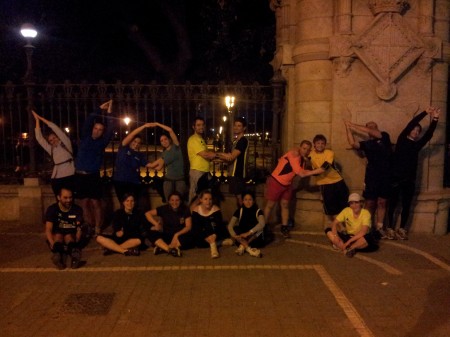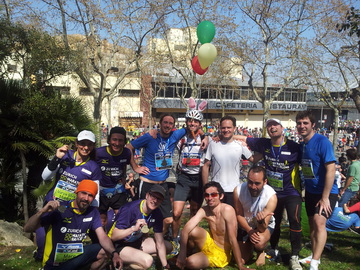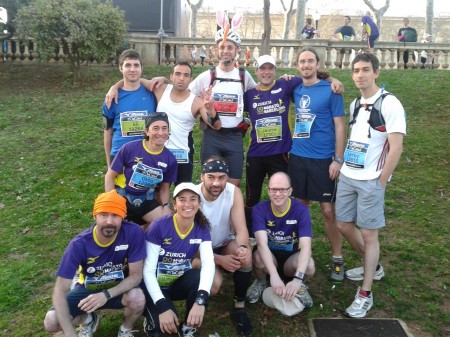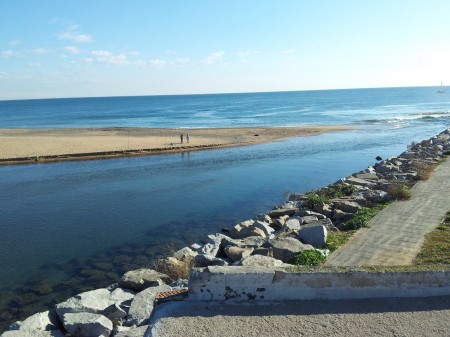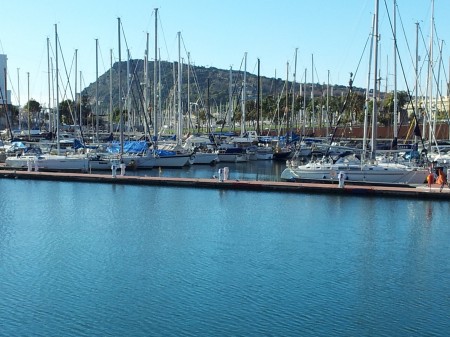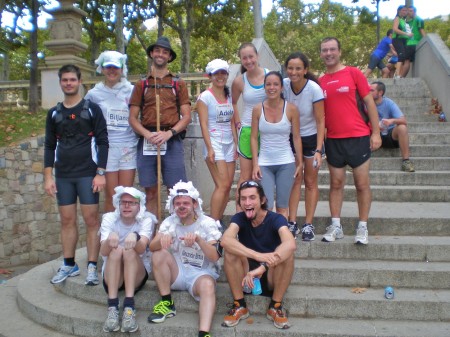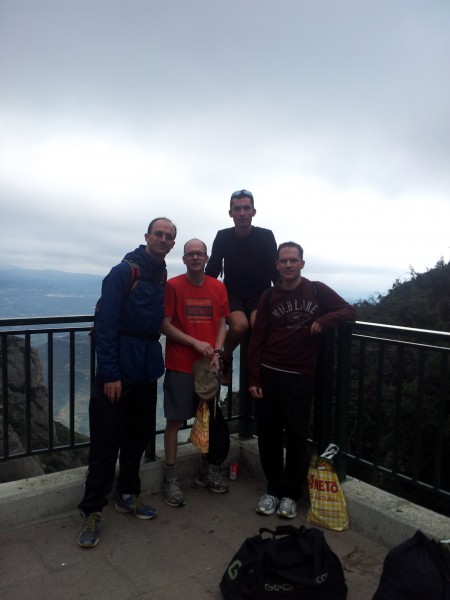This is the last part of the series. The fourth described my loss of conscience, hospitalization and recovery.
During this long stay, which was actually my first hospitalization (well, following my first marathon), I was lucky to receive a lot of love. The hospital provided a great service and a good medical treatment.
Everybody was very kind and patient. My Spanish is far from perfect, to say the least, and I don’t speak Catalan. This never put the smile off the faces of the staff there.
My parents and Galia’s sister got on a plane to Barcelona as early as they could. When hospitalization was extended, my mother extended her stay for a few more days. Thanks again!
The people from the running group also showed a lot of love.
That’s my name spelled by the runners. Special thanks to Ingmar, the organizer of the group, who came many times to visit me. Special thanks to Laura and Eli that ran errands for us and for aforementioned Tim and Reli who dropped everything to support Galia in the hospital.
Also other people from the group, out of the group in Barcelona and in Israel helped me a lot with their help, love and support and offers for logistical help to me and to Galia.
And of course, special thanks to Galia. She saved my live. That’s practically what happened.
I only remember going to sleep and waking up in a hospital a day and a half later. She saw me, faint, vomit out of sleep, undergo convulsions and perhaps also lose my breath. Later, she saw me unable to speak and had to communicate my situation to everybody. Not a fortunate task that she did very well, to say the least.
Thank everybody!
Conclusions
Why did this happen?
- Fear of dehydration due to the sunny weather.
- Israeli mentality that increased the fear of dehydration / heat shock. In Israel, such cases of water intoxication are much more common than in Europe.
- Pushing aside the importance of sodium despite the early knowledge. My pure stupidity.
- Drinking too much water during the race.
- Not consuming enough isotonics during the race.
- Hardly having any food during the race. If I was able to easily speak during the race, I certainly could have eaten something.
- Waiting too much before grabbing more food to eat after the race.
- Not insisting on eating, despite the nausea.
- Drinking more water while the situation was already deteriorating.
The easiest conclusion is to directly connect the long marathon race and water intoxication event and to avoid long runs. This is too simplistic. Here’s why I don’t subscribe to this point of view:
- I certainly believe that my near death experience was caused due to an extreme imbalance of too much water and not enough salt. See above.
- I was ready for the marathon: I made all the necessary training, and ran in a very calculated and balanced manner: when I began feeling tired, I slowed down. I finished the race feeling great.
- I have no tendency for water intoxication. Actually, there’s no so such thing.
- So far (touch wood), I have no long term damage that prevents me from running.
- Running is an important part of my life. I enjoy running, I sleep better and my appetite is healthier thanks to running.
- Are the best means of prevention prevention? I don’t think so. There certainly is a better way to do it.
- I want to overcome this event. This isn’t only an egoistic thing, but also important for my well being.
- I am convinced I can do it.
What am I planning to do?Â
- Rest as ordered at least until the next meeting with the doctor on April 23rd.
- When allowed, I’ll get back to running, listening to my body in addition to the doctor.
- I’ll gradually step up. After this event, it will take my muscles a lot of time to rebuild. This isn’t exclusive to my legs, but also to all my muscles that are recovering from the convulsions.
- When the time comes for longer races, I’ll consult a doctor who is an expert in sports, describe my event and ask for specific advice about the required behavior before the race, during the race and afterwards.
- Perhaps I will become a better person after this near-death experience 🙂
That’s it! This was a long project which helped me get better. I hope you didn’t get too bored. I usually write random, disconnected thoughts that don’t exceed 500 words…
As mentioned earlier, I plan on writing a Hebrew version and perhaps a short Spanish one. But this takes time…
All the chapters:
- Running Background
- Preparing for the Marathon
- Race Day – From Euphoria to ER
- Losing it and Getting Back
- Thanks and Conclusions

